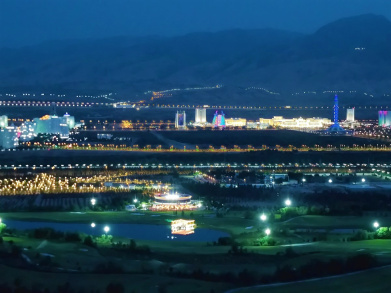Photo fact: NASA has published a new satellite image of the Amu Derya
10.09.2023 | 12:00 |NASA published a satellite image of the Amu Derya in the gallery on its website on September 9. The description of the image states that "on September 4, 2023, the medium-resolution spectroradiometer (MODIS) on the NASA Aqua satellite received a full-color image of the green stripe surrounding the Amu Derya River in Uzbekistan and Turkmenistan."
"The Amu Derya River flows from the high Pamir mountains in Central Asia through a sultry desert and eventually flows into the Aral Sea. Being one of the largest rivers in the region, it is literally a lifeline: it makes deserts green and allows people, plants and animals to thrive."
The description also talks about the Aral Sea. "In this image, in the upper left corner (northwest), you can see a white salt shaker. To the east of it is an area of cracked soil, bits of greenery and puddles of water. This depleted soil marks the southern border of the once prosperous Aral Sea. Once a vast and strong inland sea, the Aral Sea began to die as the water in the rivers feeding it (Amu Derya and Syr Derya) began to deviate and the water flow decreased. Today, most of the Aral Sea has dried up, leaving behind nothing but parched, hypersalted soil, which easily turns into dust carried through the air."
Attention is also drawn to such a unique and ecologically important forest ecosystem as the Tugai, which exists only along large rivers in the deserts of Central Asia. "The Tugai forest is rich in Euphrates poplar, several types of shrubs and herbs. It provides a critical habitat for a wide variety of species, especially migratory birds. Hardy and drought- and heat-resistant vegetation is crucial to prevent desertification, protect against sandstorms, and protect biodiversity."
Earlier, we published a video from the ISS, which was made by Russian cosmonaut Oleg Artemyev, flying over Central Asia, indicating that Uzbekistan and Turkmenistan are clearly visible on it. The author focused his attention on the Amu Derya.
ORIENT news











